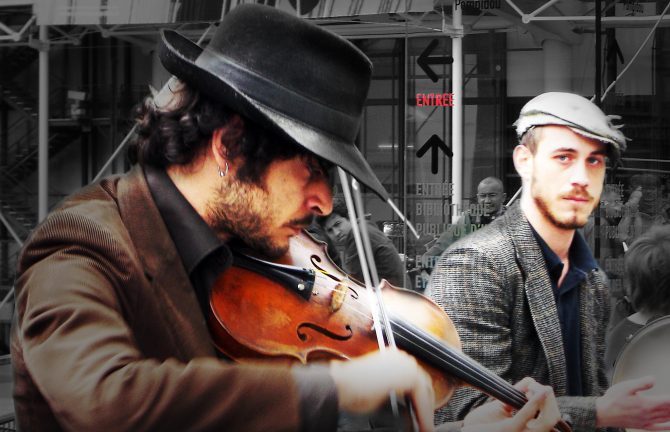Klezmer music has its origins in Europe among the Ashkenazi Jews. The word is a Yiddish contraction of the Hebrew words for instrument (kley) and song (zemer). This traditional folk music borrows inspiration from music from the synagogue, Roma peoples, European folk musics, and even classical music. It is at its heart party music, and is often played at weddings and other festive events.
A klezmer band may be made up of several different instruments, including but not limited to clarinet, violin, accordion, trumpet, tuba, bass drum, cymbals, and hammered dulcimer. The music continues to evolve, and now finds its inspirations from other popular music styles and featuring more modern instruments.
"Al-Di-Dai-Da" by Aaron Lebedeff & Sholom Secunda
An example of traditional klezmer music from the Boston Public Library's 78rpm collection.
"Immigrant Song" by Amsterdam Klezmer Band
An example of klezmer mixed with hip-hop.
Classical music may have influenced klezmer music, but klezmer music also influenced classical music. BMOP, the Boston Modern Orchestra Project, has an upcoming concert on November 23 featuring music that uses klezmer music as its inspiration: Klezmer Madness! Readers who have a Boston Public Library card may get a pass good for up to four adults to attend this concert and their other concerts this season free of charge through our Museum Passes program, opens a new window.
Perhaps the best known example of klezmer music in a classical setting can be found in the third movement of Gustav Mahler's 1st Symphony. Listen as the oboes and trumpets bring in the first part of the melody, followed then by the clarinets, bass drum and cymbal for the second part of the melody.
Books
eBooks
Scores
CDs
The Rough Guide To Klemzer Revival
The Rough Guide to Klezmer Revolution
Streamed Audio
Klezmania: Klezmer for the New Millennium



Add a comment to: Klezmer Music